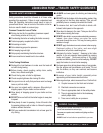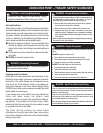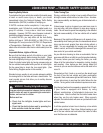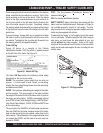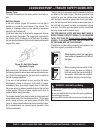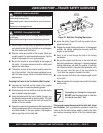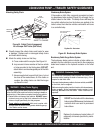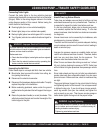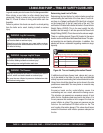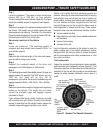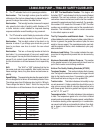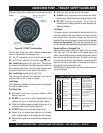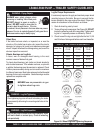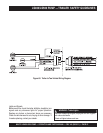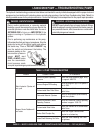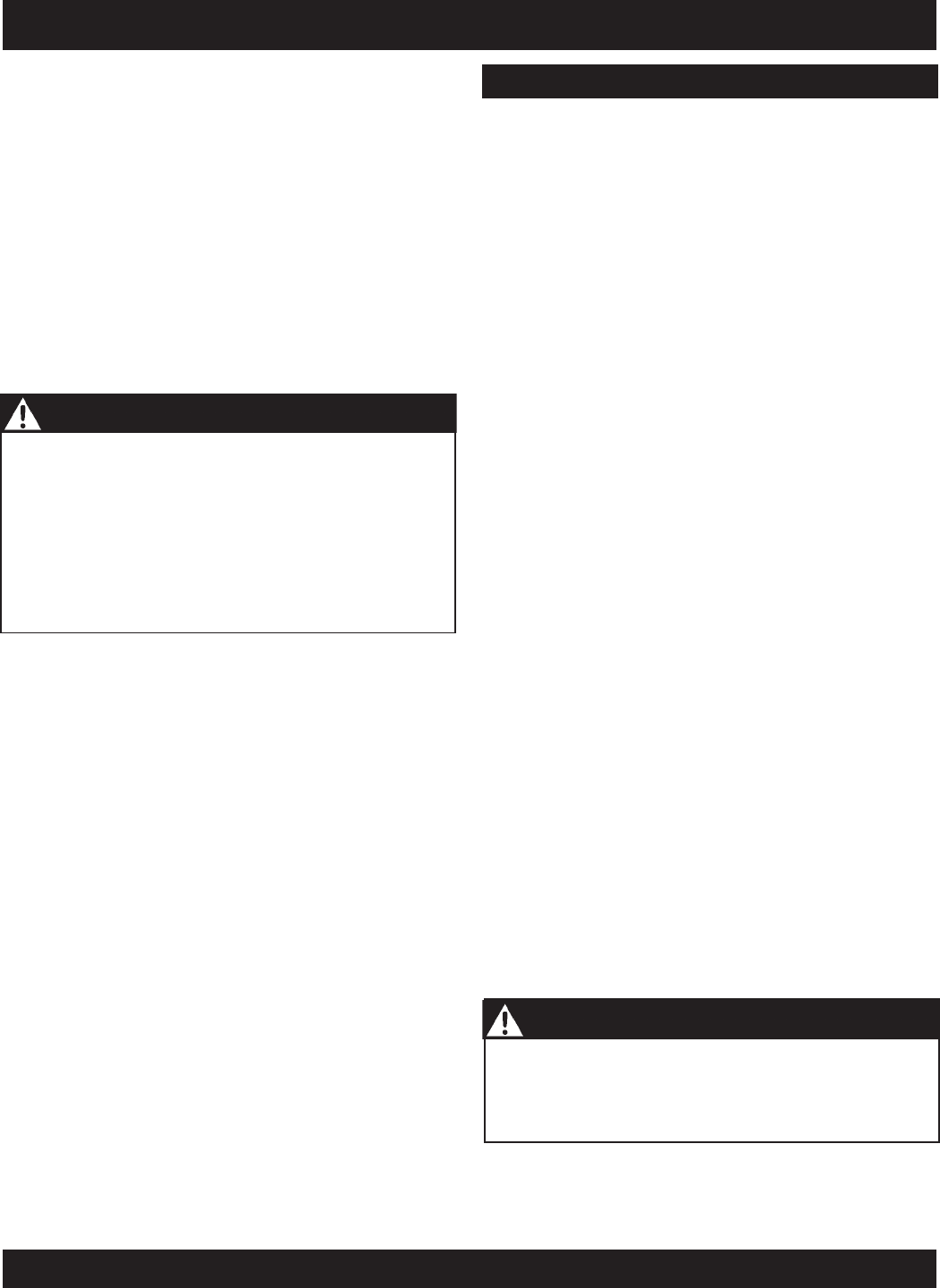
MAYCO LS400/LS500 PUMP — OPERATION AND PARTS MANUAL — REV. #6 (09/19/11) — PAGE 55
LS400/LS500 PUMP — TRAILER SAFETY GUIDELINES
Uncoupling the Ball Hitch
Follow these steps to uncouple ball hitch from tow vehicle:
Block trailer tires to prevent the trailer from rolling, be-
fore jacking the trailer up.
Disconnect the electrical connector.
Disconnect the breakaway brake switch cable. Promptly
replace the pullpin in the switchbox.
Before extending jackstand, make certain the ground
surface below the jackstand foot will support the tongue
load.
Rotate the jackstand handle (or crank) clockwise. This
will slowly extend the jack and transfer the weight of the
trailer tongue to the jack.
Connecting Trailer Lights
Connect the trailer lights to the tow vehicle’s electrical
system using the electric connectors at the front of the trailer
(tongue). Refer to the wiring diagram shown in the trailer
wiring diagram section of this manual. Before towing the
trailer check for the following:
Running lights (turn on tow vehicle headlights).
Brake Lights (step on tow vehicle brake pedal).
Backup Lights (place tow vehicle gear shift in reverse).
Turn Signals (activate tow vehicle directional signal le-
ver).
Improper electrical connection between the tow vehicle
and the trailer will result in inoperable lights and electric
brakes, and can lead to collision.
Before each tow:
Check that the taillights, brake lights and turn signals
work
Check that the electric brakes work by operating the
brake controller inside the tow vehicle.
WARNING - Improper Electrical Connections
TIRE SAFETY
Unsafe Tires, Lug Nuts or Wheels
Trailer tires and wheels are more likely to fail than car tires
and wheels because they carry a heavier load. Therefore, it
is essential to inspect the trailer tires before each tow.
If a tire has a bald spot, bulge, cuts, is showing any cords,
or is cracked, replace the tire before towing. If a tire has
uneven tread wear, take the trailer to a dealer service center
for diagnosis.
Uneven tread wear can be caused by tire imbalance, axle
misalignment or incorrect inflation.
Tires with too little tread will not provide adequate tracking
on wet roadways and can result in loss of control, leading to
death or serious injury.
Improper tire pressure causes an unstable trailer and can
result in a tire blowout and loss of control. Therefore, before
each tow you must also check the tire pressure. Tire
pressure must be checked when tires are cold.
Allow 3 hours cool-down after driving as much as 1 mile at
40 m.p.h. before checking tire pressure. NOTE: Trailer tires
will be inflated to higher pressures than passenger vehicle
tires.
Since trailer wheels and lug nuts (or bolts) are subjected to
greater side loads than automobile wheels, they are more
prone to loosen. Before each tow, check to make sure they
are tight.
The proper tightness (torque) for lug nuts is listed in the lug
nut tightening section of this manual. Use a torque wrench
to tighten the lug nuts. If you do not have a torque wrench,
use a lug wrench (from your tow vehicle) and tighten the
nuts as much as you can. Then have a service garage or
trailer dealer tighten the lug nuts to the proper torque.
Metal creep between the wheel rim and lug nuts will cause
rim to loosen and could result in a wheel coming off,
leading to death or serious injury.
Tighten lug nuts before each tow.
WARNING - Lug Nut Tightening



